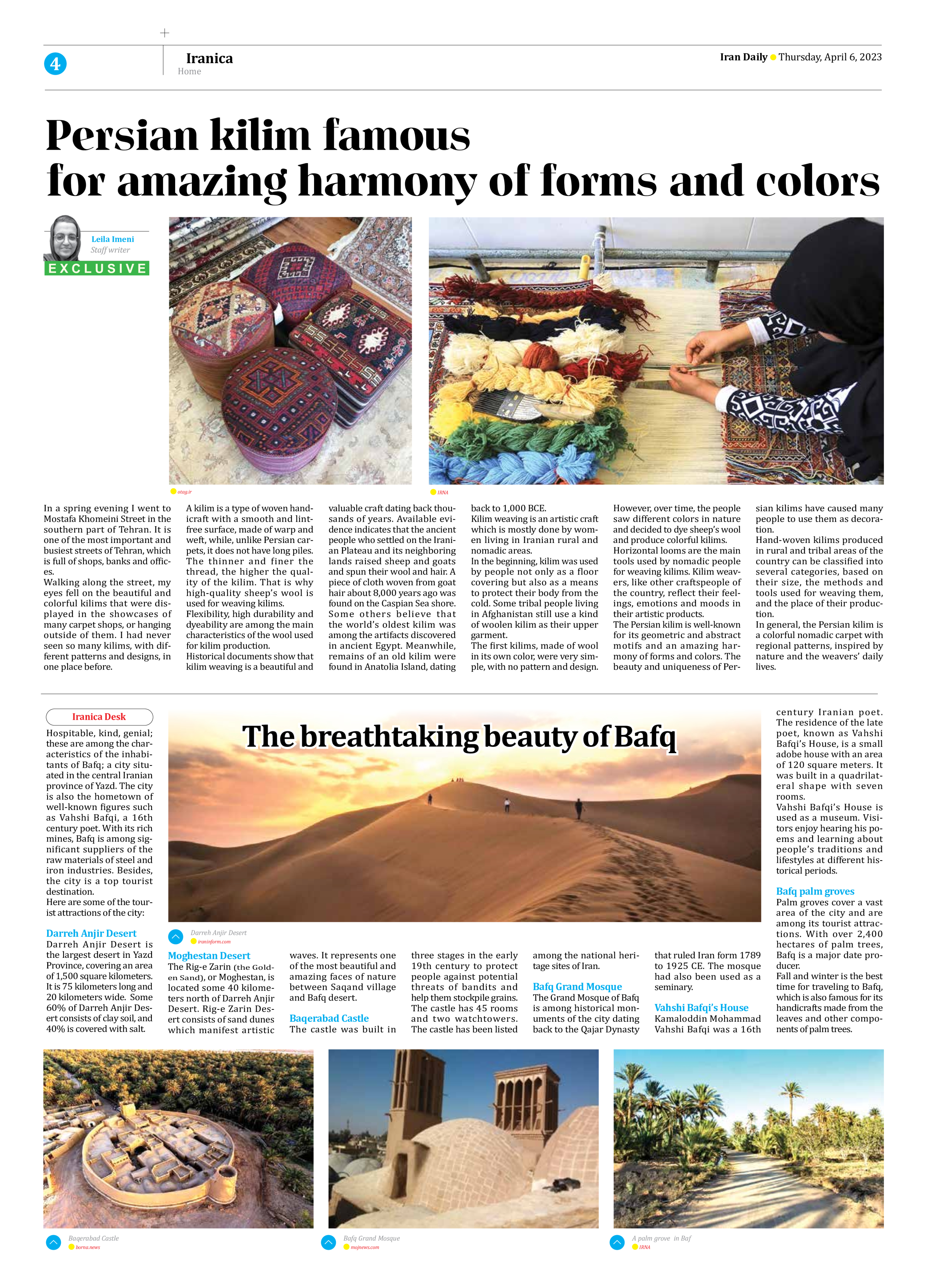
Persian kilim famous for amazing harmony of forms and colors
Leila Imeni
Staff writer
In a spring evening I went to Mostafa Khomeini Street in the southern part of Tehran. It is one of the most important and busiest streets of Tehran, which is full of shops, banks and offices.
Walking along the street, my eyes fell on the beautiful and colorful kilims that were displayed in the showcases of many carpet shops, or hanging outside of them. I had never seen so many kilims, with different patterns and designs, in one place before.
A kilim is a type of woven handicraft with a smooth and lint-free surface, made of warp and weft, while, unlike Persian carpets, it does not have long piles.
The thinner and finer the thread, the higher the quality of the kilim. That is why high-quality sheep’s wool is used for weaving kilims.
Flexibility, high durability and dyeability are among the main characteristics of the wool used for kilim production.
Historical documents show that kilim weaving is a beautiful and valuable craft dating back thousands of years. Available evidence indicates that the ancient people who settled on the Iranian Plateau and its neighboring lands raised sheep and goats and spun their wool and hair. A piece of cloth woven from goat hair about 8,000 years ago was found on the Caspian Sea shore.
Some others believe that the world’s oldest kilim was among the artifacts discovered in ancient Egypt. Meanwhile, remains of an old kilim were found in Anatolia Island, dating back to 1,000 BCE.
Kilim weaving is an artistic craft which is mostly done by women living in Iranian rural and nomadic areas.
In the beginning, kilim was used by people not only as a floor covering but also as a means to protect their body from the cold. Some tribal people living in Afghanistan still use a kind of woolen kilim as their upper garment.
The first kilims, made of wool in its own color, were very simple, with no pattern and design. However, over time, the people saw different colors in nature and decided to dye sheep’s wool and produce colorful kilims.
Horizontal looms are the main tools used by nomadic people for weaving kilims. Kilim weavers, like other craftspeople of the country, reflect their feelings, emotions and moods in their artistic products.
The Persian kilim is well-known for its geometric and abstract motifs and an amazing harmony of forms and colors. The beauty and uniqueness of Persian kilims have caused many people to use them as decoration.
Hand-woven kilims produced in rural and tribal areas of the country can be classified into several categories, based on their size, the methods and tools used for weaving them, and the place of their production.
In general, the Persian kilim is a colorful nomadic carpet with regional patterns, inspired by nature and the weavers’ daily lives.







